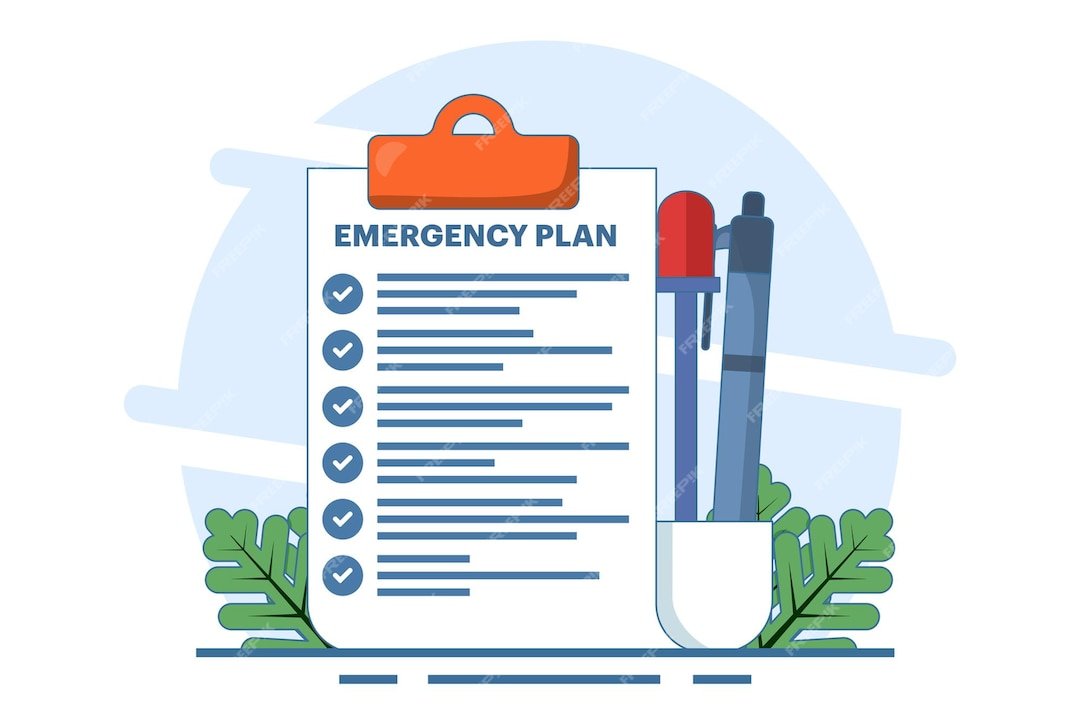Introduction
Implementing HIRA, Hazard Identification and Risk Assessment, and EAP, Emergency Action Plan, is an essential feature of workplace safety and preparedness. HIRA helps organizations systematically identify potential hazards and implement controls to prevent accidents and injuries.
An Emergency Action Plan or EAP provides clear procedures for responding to crises. A well-structured EAP ensures that employees understand their roles, learn about evacuation routes and act swiftly during an emergency. Proper implementation of HIRA and EAP enhances workplace resilience and safeguards lives while minimizing operational disruptions.
Read on to learn more about how HIRA and EAP can significantly improve workplace safety. The blog is a step-by-step guide to implementing the two processes to protect employees and minimize workplace disruptions.
What Do You Mean By HIRA?
HIRA full form in safety: Hazard Identification and Risk Assessment.
HIRA is a framework of essential safety measures. Hazard Identification involves inspecting the workplace and various processes that detect potential risks. Risk Assessment follows an evaluation of identified hazards based on severity and likelihood.
HIRA enables management to implement preventive and corrective actions, ensuring a safe working environment. A thorough HIRA approach helps protect workers and improve overall workplace conditions. Continuous inspections, complete hazard analysis and thorough incident investigation are functions performed by HIRA.
How Does Hazard Identification and Risk Assessment Benefit Your Workplace?
- HIRA prevents workplace accidents and ensures a safe environment for everyone.
- HIRA enables management to meet compliance regulations for complete occupational health and safety management.
- Proactive risk assessment prevents disruptions caused by accidents, keeping operations smooth.
- With Hazard identification and risk assessment, employee confidence gets a boost as a safe working environment is created.
- Financial losses are minimised as accident prevention lowers costs related to medical expenses.
Ways to Implement HIRA
- Identification of Hazards
Identifying risks is the first step in managing workplace safety. Organizations must recognise all risks at the workplace and operate accordingly to develop effective safety policies. A thorough assessment ensures a safe working environment.
- Evaluation of Risks
Once hazards are identified, organizations must assess their risks based on severity and likelihood. Ranking hazards helps an organization address urgent threats and helps managers address critical issues first. A structured evaluation allows timely risk management and workplace safety.
- Building and Implementing Strategies
Following hazard assessment, organizations develop and execute safety strategies. These strategies are based on risk identification, evaluation and thorough analysis. Proper implementation ensures workplace security which reduces potential accidents.
- Monitor and Review Processes
Workplace safety requires continuous monitoring and review. Regular assessments ensure that control remains effective and identifies lapses at the right time. Corrective actions must be applied immediately to maintain high safety standards.
What Do You Mean By an Emergency Action Plan (EAP)?
An Emergency Action Plan (EAP) is a structured set of procedures designed to ensure safety at a workplace. This system is used to manage fires, save against natural disasters and manage emergencies in community spaces.
The plan involves identifying potential emergencies, designation emergency coordination and setting various evacuation routes. Particular communication procedures and medical response tools comprise the system.
How Does An Emergency Action Plan Benefit Your Workplace?
- EAP ensures quick emergency response and allows the management to respond swiftly to minimize injuries.
- With EAP, workplace disruptions are reduced which keeps the business running smoothly. This prevents chaos during a crisis.
- Employee safety is greatly enhanced as evacuation plans are pre-planned and safety procedures are foolproof.
- Regulatory compliance is greatly enhanced, legal penalties are reduced and legal requirements are met.
- A sense of panic is reduced among employees which promotes a sense of self-confidence. This makes occupational health and safety management system essential for any organisation.
Ways to Implement EAP
- Regular Review of Audit Plans
Regularly reviewing audit plans identifies weaknesses and keeps the processes updated. The management is able to comply with safety regulations effectively and maintain a general culture of proactive safety. Employees are prepared for emergencies with the latest protocol.
- Conducting Emergency Drills
Evacuation routes, rapid response procedures and assigned roles during crises are an essential function of an Emergency Action Plan. Regular drills allow the management team to identify gaps and make necessary improvements for increased workplace safety.
- Informing Employees
Clear communication ensures that all employees understand all the required emergency procedures. Regular training sessions, safety briefings and posted guidelines reinforce emergency preparedness. Prompt response during critical situations is another vital component of EAP.
Conclusion
A well-implemented HIRA and EAP significantly improve workplace safety. Timely identification of risks and preparing employees for emergencies is an essential part of these safety systems. If a business wants to build a reputation in the market, prioritizing safety fosters trust and ensures compliance with laws reducing the chances of penalties. Therefore, enhance your overall productivity and install the best hazard management plans for your organization.
Frequently Asked Questions (FAQs)
Q. 1 Which ISO specifies measures to ensure complete occupational health and safety of workers at a workplace?
Answer: ISO 45001 is the standard that highlights regulations to ensure occupational health and safety in a workplace. The standard underlines ways to prepare for emergencies like conducting mock drills and continuously reviewing their effectiveness.
Q. 2 What are the 6 steps of an emergency action plan?
Answer: Conducting a risk assessment procedure, establishing roles and responsibilities, developing emergency procedures, framing a communication plan, conducting timely training and drills and updating an emergency plan are the 6 main steps of an EAP.
Q. 3 What are the 3 action steps to be taken during an emergency?
Answer: Checking, calling and caring are the immediate action steps taken by an organization during an emergency. These three steps must be initiated immediately when a crisis occurs.
Q. 4 What are the 5 essential hazard controls?
Answer: Elimination, substitution, engineering controls, administrative controls and personal protective equipment are the 5 important essential hazard controls of an occupational health and safety management system.
Q. 5 What are the 5 main emergencies that every organization must prepare for?
Answer: The 5 main emergencies that every organization must prepare for are fire, chemical accidents or incidents, biological or nuclear accidents, public health emergencies, animal diseases and acts of terrorism.











